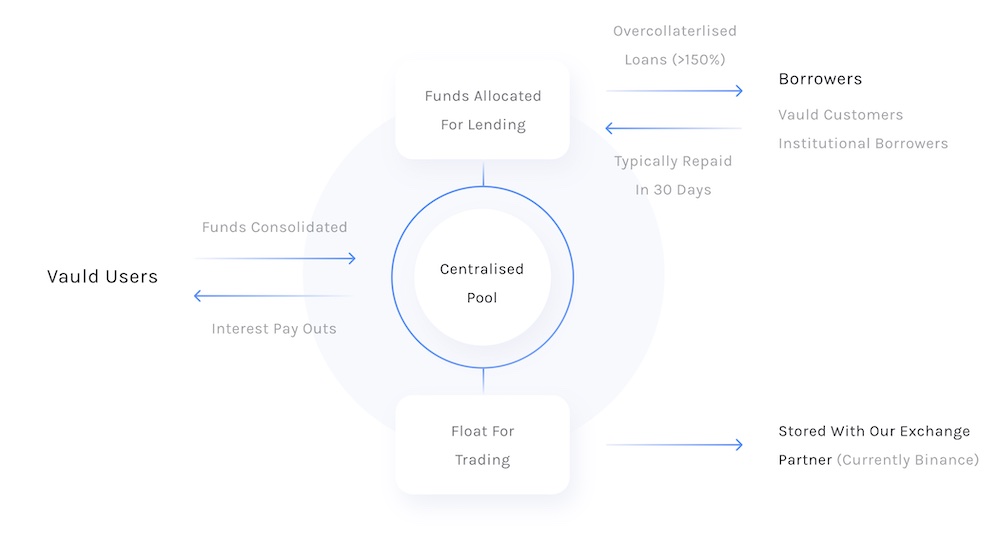TechCrunch |
- India’s Tata Motors wants to sell 50,000 EVs by end of fiscal year
- Xiaomi launches smartphone with enormous imaging sensors and Leica optics
- Max Q: Capped
- FTX policy exec says its ‘priorities have not changed’ amid market madness
- Just how wrong were those 2021 valuations?
- Remove that ‘exit strategy’ slide from your pitch deck
- WeWork India exposed visitors’ personal information and selfies
- TikTok says ‘Project Texas’ will bolster security for U.S. users in wake of China data access concerns
- Meta is pulling the plug on its crypto payments wallet, Novi
- The Station: Robotaxi roadblock and Tesla layoffs hit Autopilot team
- Crypto platform Vauld suspends withdrawals, trading and deposits amid financial challenges
- Juragan Material is simplifying Indonesia’s complicated construction supply chain
- PINA offers wealth management for Indonesia’s growing middle- to upper-class
- Despite crypto ban, China’s tech talent rides the global web3 wave
| India’s Tata Motors wants to sell 50,000 EVs by end of fiscal year Posted: 04 Jul 2022 05:54 PM PDT Mumbai-based automaker Tata Motors wants to sell 50,000 electric vehicles by the end of the fiscal year ending March 31, the company’s chairperson Natarajan Chandrasekaran said during a shareholders’ meeting on Monday. In the 2023/24 period, Tata — which produces passenger cars, trucks, vans, coaches, buses, luxury cars, and construction equipment — aims to hit 100,000 EV sales, according to Chandrasekaran, as reported by Reuters. The push towards EVs follows a national plan to ensure that up to 30% of total passenger car sales in India are electric by 2030, up from about 1% today. E-scooters and e-bikes will account for 80% of two-wheeler sales, up from 2% today. Given the Indian government’s high import duties on EVs, getting citizens to make the switch to electric will largely depend on the success of local production. After attempting to bring its EVs to the Indian market, Tesla appears to have abandoned efforts to set up a factory in the country. Tesla usually has a “try before buy” approach to moving into new markets — it imports vehicles to see how sales go before investing the time and money in building a regional factory. Transport minister Nitin Gadkari said Tesla was welcome to build a factory in the country, but that it won’t allow the automaker to bring in vehicles from China to sell and service, so Tesla hasn’t moved forward with those plans. Tata currently sells three EV models, including Nexon EV, Tigor EV and the newest Nexon EV Max. Unlike the path many U.S. automakers have followed of building new EV production lines from the ground up, Tata says it’s able to keep costs down for the Indian consumer by repurposing a successful internal combustion engine model, the Nexon, and outfitting it with a battery pack. The Nexon starts at around $19,000, which isn’t exactly cheap for the average Indian driver, but is certainly within the range of the country’s upper-middle class. Tata commands 90% of India’s electric car sales, and appears to be on track to reach its goal of selling 50,000 EVs by March 2022. The automaker’s June sales results show 45,197 total units sold, out of which 3,507 were electric — the most Tata has ever sold, and up 433% from 658 last year. Chandrasekaran was optimistic about the trajectory of Tata’s performance this fiscal year with the overall supply situation, including that of semiconductors, improving and stabilizing. |
| Xiaomi launches smartphone with enormous imaging sensors and Leica optics Posted: 04 Jul 2022 04:18 PM PDT With a limited launch in mainland China today, one glance at the new smartphones from Xiaomi leaves little doubt what the smartphone is all about. A third of the back of the smartphone is dominated by a dome covering a number of cameras with one of the biggest sensors we’ve seen in a smartphone so far – a 1-inch sensor covered with Leica glass. A lot of people – men especially – will tell you that size doesn’t matter. In the case of imaging sensors, that just isn’t the case; the glass in front of lenses can only do so much and perfect glass doesn’t exist. Bigger sensors means higher resolution, yes, but it also means that the sensors have space for bigger individual pixels. This helps both with the cooling of the sensor and could indicate much better low-light performance. The entire 12S series of smartphones features different imaging systems jointly developed by Xiaomi and Leica. I know that in the process of making fun of Leica recently, I was making fun of Hasselblad for its smartphone integration, but in this case it actually somewhat makes sense. By using lenses designed by Leica (carrying the prestigious Leica Summicron brand, no less), the phone might actually be able to make the most of its sensors. The range of cameras available on the various cameras include some pretty sophisticated lens designs rarely seen on smartphones; I can’t wait to get my hands on one and see if it works as well out in the real world as it looks on paper.  That’s a full-size smartphone. That’s also a hell of a lens. Image Credit: Xiaomi. The company claims that its lens designs drastically improve the photo quality the camera can deliver in general. The alphabet soup in the press release makes it sound as if the smartphone has re-invented the wheel, and makes some pretty juicy promises:
To those of us who’ve read a photography press release or two, the first paragraph above can be summarized as “We stuck tech in this camera that was pretty common on compact cameras in 2005 or so” and the second can be summarized as “… and we created some filters that have been around in Hipstamatic since 2009, but these look kinda like Leica cameras look. Ignoring, of course, that the ‘Leica look’ is heavily dependent on the films you put in the camera giant’s legendary cameras. Press release sleight of hand aside, the cameras themselves do look impressive, and sticking Sony's IMX989 1-inch sensors in smartphones is a hell of a feat to pull off, both from an engineering point of view and as a commitment to photography from the smartphone maker.  I mean just look at that thing! Image credit: Xiaomi. To use a corollary: Have you ever heard of the A-10 fighter plane? Usually referred to as the Warthog, was essentially a ridiculously large machine gun firing depleted uranium rounds, and they built a plane around it to be able to blow up tanks. That’s the image this smartphone conjures for me; this isn’t the kind of optics you just slap into a phone at the last minute because the product folks thought it was a good idea. The sensors, mated with high-quality glass, promise exceptional low-light photography capabilities. Pair that with some smart computational photography skills, and a 10-bit RAW format, and you’re starting to talk about some truly advanced camera tech indeed. These phones could very well be the final nail in the low-end compact camera category that’s been at death’s door for so long. Wild, for the photography buffs, is that we’re here talking about an SLR-challenging 50.3 megapixels of resolution and a 23mm-equivalent wide-angle lens. This is, as far as I’m aware, the most advanced set of lens/sensor combos of any smartphone on the market. Of course, megapixels aren’t everything.  Sample image shot with the new flagship smartphone. It was taken with the 24mm f/1.9 built-tin lens at 1/1250 shutter speed and ISO 225. Image credit: Xiaomi. The rest of the smartphone looks decent on paper as well – 67W high-speed charging, a large 4,860 mAh battery and smart battery management should keep you running for a while. The phone is powered by the all-new Snapdragon® 8+ Gen 1 Mobile Platform. The Xiaomi 12S Ultra is even equipped with a cooling pump that uses a capillary network to pump cooling liquid around and keep things from overheating and a 6.73" AMOLED color display. The phones are currently only available in mainland China, with the Xiaomi 12S Ultra starting at around $900, the Xiaomi 12S Pro starting at around $700, and the Xiaomi 12S starting at $600. No word on if or when these will make it outside of the country’s borders. |
| Posted: 04 Jul 2022 03:00 PM PDT Hello and welcome back to Max Q. I hope all my American readers had a restful Independence Day. In this issue:
Don't forget to sign up to get the free newsletter version of Max Q delivered to your inbox. And by the way…TechCrunch+ is having an Independence Day sale! Save 50% on an annual subscription here. More information here. Relativity Space inks deal with OneWeb, reaches $1.2B in Terran R launch contractsRelativity Space will be sending OneWeb's second-gen broadband satellites to orbit starting in 2025 using its fully reusable 3D-printed rocket Terran R, under a new multi-launch agreement. This is the fifth customer for Terran R, and the only one that has been publicly named, bringing the total value of all binding launch agreements for that rocket to more than $1.2 billion. I spoke to CEO Tim Ellis on the news. He was pumped, as one might expect! "To have such large contracts signed before launching, and before even launching Terran 1, I think is really speaking to the confidence that people have in the team and in our approach," he said. We also chatted about the company’s latest generation of its line of 3D printers, which it calls Stargate. Ellis said this new gen can print up to 10 times faster than the previous generation. But just how fast is that? At the current rate they're demonstrating, a Stargate can print a Terran 1 fuselage in just five days. That’s not a typo.  Relativity Space CEO Tim Ellis with Stargate. Image Credits: Relativity Space Get hype for the first images from NASA's James Webb Space TelescopeVery soon, humanity will get to view the deepest images of the universe that have ever been captured. In two weeks, the $10 billion James Webb Space Telescope (JWST) — NASA's super expensive, super powerful deep space optical imager — will release its first full-color images, and agency officials today suggested that they could just be the beginning. "This is farther than humanity has ever looked before," NASA Administrator Bill Nelson said during a media briefing Wednesday (he was calling in, as he had tested positive for COVID-19 the night before). "We're only beginning to understand what Webb can and will do." Check back with TechCrunch for coverage of the image release on July 12. Mark your calendars!  GREENBELT, MD – NOVEMBER 02: Engineers and technicians assemble the James Webb Space Telescope November 2, 2016 at NASA’s Goddard Space Flight Center in Greenbelt, Maryland. The telescope, designed to be a large space-based observatory optimized for infrared wavelengths, will be the successor to the Hubble Space Telescope and the Spitzer Space Telescope. It is scheduled to be launched in October 2018. Image Credits: Alex Wong/Getty Images More news from TC…
…and beyond
Image of the week This illustrated plate, published in 1613 by Italian astronomer Galileo Galilei, shows the movement of sunspots on the Sun’s surface. Twenty years after this image was published, he was found guilty of heresy by the Roman Inquisition, in part due to his belief that the Earth was not the center of the universe. Image Credits: SSPL/Getty Images Max Q is brought to you by me, Aria Alamalhodaei. If you enjoy reading Max Q, consider forwarding it to a friend. |
| FTX policy exec says its ‘priorities have not changed’ amid market madness Posted: 04 Jul 2022 11:00 AM PDT As the crypto markets continue to trend downward, the world’s second-largest crypto exchange, FTX, remains undeterred. “Our priorities have not changed,” Mark Wetjen, head of policy and regulatory strategy at FTX, told TechCrunch. “Markets will do what they do, but the reality is that the digital asset marketplace and digital asset ecosystem, we believe, is here to stay.” If anything, the exchange, last valued at $32 billion, has the potential to become something of a savior for a number of struggling crypto companies. At the least, it’s been in the news often enough to give that theory some credence. TechCrunch+ is having an Independence Day sale! Save 50% on an annual subscription here. (More on TechCrunch+ here if you need it!) For one, FTX has reportedly gathered over $2 billion for acquisitions and stakes in other companies. The company has also launched a $2 billion venture capital fund earlier this year to back teams building in web3.
“One of the challenges of operating in the space is the relative lack of clarity.” Mark Wetjen, head of policy, FTX |
| Just how wrong were those 2021 valuations? Posted: 04 Jul 2022 10:00 AM PDT Happy Monday. It’s Independence Day here in the United States, which means that much of TechCrunch is on holiday. But as last week came to a close, several important pieces of data dropped that are worth our consideration. Let’s not let that opportunity pass, day off or not. (Also, this is the last day of our Fourth of July sale, so, you know, feel free to contribute to, ahem, TechCrunch’s financial independence as well!) The bits of data that came out on Friday included Klarna’s potentially final new valuation, which is settling even lower than we anticipated, and the conclusion of the FTX-BlockFi drama, which we need to unpack because the numbers are a little harder to parse than the headline figures you might have seen over the weekend. TechCrunch+ is having an Independence Day sale! Save 50% on an annual subscription here.
Klarna and BlockFi as warning shotsAs always when discussing negative news items, we’re not here to crow. Instead, we want to parse new data so that we can better understand the state of the market. Covering layoffs, down rounds and the like is not nearly as much fun as covering IPOs. So, here’s to getting back to that when possible. Regardless, the bad news summarizes as follows: |
| Remove that ‘exit strategy’ slide from your pitch deck Posted: 04 Jul 2022 08:00 AM PDT A lot of pitch decks I review have a slide that really shouldn’t be there: the exit strategy slide. Your slide deck should only have an exit strategy slide if you’re running a very late-stage company that’s about to IPO, and even then, you probably wouldn’t have it as a slide on a funding deck but as a whole, separate IPO plan. As an early-stage startup, it’s downright nonsensical, and it shouldn’t be part of your pitch deck at all. To a lot of founders, an exit — or a “liquidation event,” as the legal buffs tend to refer to it — is the big pot of gold at the end of a very long and arduous journey. The same goes for investors; when there’s an acquisition or a public listing, that’s how everyone gets paid. Moreover, some of the old pitch deck templates that are floating around on the internet have an exit strategy slide on them, so it makes sense that people are still making this mistake. TechCrunch+ is having an Independence Day sale! Save 50% on an annual subscription here. (More on TechCrunch+ here if you need it!) Two things are true: One is that the best companies are bought, not sold. It’s unlikely that you know in advance exactly who will be interested in buying your company. Second, your job as a founder is to build the best company you possibly can. Making decisions early on to help shape the company into something someone might want to buy simply doesn’t make sense; it makes you blind to some of the other options and opportunities that might present themselves. |
| WeWork India exposed visitors’ personal information and selfies Posted: 04 Jul 2022 06:30 AM PDT WeWork India has fixed a security lapse that exposed the personal information and selfies of tens of thousands of people who visited WeWork India’s coworking spaces. Security researcher Sandeep Hodkasia found visitor data spilling from the check-in app on WeWork India’s website, used by visitors to sign-in at the dozens of WeWork India locations across the country. A bug in the app meant it was possible to access the check-in record of any visitor by increasing or decreasing the user’s sequential user ID by a single digit. Because the check-in tool was internet-facing, the bug allowed anyone on the internet to cycle through thousands of records, exposing names, phone numbers, email addresses, and selfies. Hodkasia said there were no obvious controls in place to prevent someone from accessing the data in bulk. None of the data was encrypted. Hodkasia described the bug to TechCrunch, which replicated and confirmed his findings, and passed the information to WeWork India. When reached by email, WeWork India spokesperson Apoorva Verma confirmed its website “had a bug that allowed unintentional access to the basic visitor information.” The check-in app was pulled from the website soon after TechCrunch contacted the company. According to Verma, WeWork India is “in the midst of transitioning our website,” and that its recent changes “mitigated” the exposure. It’s not known exactly how many visitors’ information was exposed or for how long. When asked if there were any plans to notify those whose information was exposed, WeWork India spokesperson Sweta Nair would not say. (India’s new data breach reporting rules, which require companies to notify authorities of a data breach within six hours of discovery, have yet to take effect, following a delay in the rollout of the rules.) WeWork India joins a raft of Indian companies and organizations in the past year beset by a lapse in cybersecurity. In 2020 during the peak of the COVID-19 pandemic, India’s largest cell network Jio exposed a database containing the results of a coronavirus self-test symptom checker on its website. Earlier this year, India’s Central Industrial Security Force left a database packed with network logs exposed to the internet, allowing anyone to directly access internal files on CISF’s internal network. And, in June, TechCrunch reported the latest spill of Aadhaar numbers involving potentially millions of India’s farmers, thanks to a security lapse at the PM-Kisan government agency. Read more:
To get in touch with the security desk, you can message on Signal at +1 646-755-8849 or zack.whittaker@techcrunch.com by email. |
| Posted: 04 Jul 2022 06:00 AM PDT Over the weekend, TikTok wrote to Republican Senators to assure them that it’s working on a program called “Project Texas” to bolster data security for U.S.-based users. This was in response to the Senators’ letter to the company dated June 27 that questioned its data access policy after BuzzFeed News reported some China-based employees had access to U.S. TikTok users’ data. “The broad goal for Project Texas is to help build trust with users and key stakeholders by improving our systems and controls, but it is also to make substantive progress toward compliance with the final agreement with the U.S. government that will fully safeguard user data and U.S. national security interests,” TikTok CEO Shou Zi Chew said in the letter. Chew hoped that the company’s response to Senators’ questions in the letter will assure them that the short video app hasn’t misled Congress at any point. While reiterating its goal of moving 100% of US users’ data to Oracle’s cloud, it admitted that some China-based employees have access to this data “subject to a series of robust cybersecurity controls and authorization approval protocols overseen by our US-based security team.” TikTok also said that ByteDance engineers across the world contribute to developing its recommendation algorithm, but its deal with Oracle will make sure that training for its AI will happen on the U.S.-based company’s cloud. TikTok has been weathering questions and skepticism for years over how U.S. data is handled on its platform, and more generally data-sharing practices with its China arm and the impact on U.S. national security; although after the initial controversies that first surfaced when Trump was still in office and threatening to ban the app outright, some of it had died down. In the wake of the BuzzFeed report from mid-June, however, that criticism has amplified in volume again. Last week, FCC Commissioner Brendan Carr wrote to Apple and Google about removing the short video app from their app stores over national security concerns. |
| Meta is pulling the plug on its crypto payments wallet, Novi Posted: 04 Jul 2022 05:28 AM PDT Three years after Facebook announced its ill-fated push into cryptocurrency, aka the Libra project, the tech giant has signalled another scaling back of its activity — announcing Friday that Novi, the digital wallet payments pilot it launched last October, will be ending on on September 1. In a statement provided to CoinDesk, the tech giant that’s now known as Meta suggested it has plans to repurpose the digital wallet technology (neé Calibra) for future products, including those related to its eponymous focus on “metaverse” development. Although it’s not clear exactly what Meta might have in mind for repurposing the Novi tech. Senior Meta execs have talked up the metaverse as a major opportunity for digital commerce. Albeit, they’ve also cautioned over the lengthy timescales that will be required to develop the sought for market — suggesting it could take decades. In recent months, the company has also been testing support for digital collectables (aka NFTs) — so Meta having its own digital wallet infrastructure could support a wider push into non-fungible token trading if it decides there’s enough money to be made on that front (but, again, NFT trading volumes are steeply down vs last year — as digital collectables catch crypto’s chill). The Novi pilot, meanwhile, was a lot more basic: It enabled testers to make fee-free, instant personal payments via the Novi app, using a stablecoin as the transfer medium — with Meta’s marketing claiming its tech made sending money “as easy as sending a message”. The pilot was limited to users in the US and Guatemala. A limited integration with WhatsApp was also rolled out last December for a subset of US users of the Facebook-owned messaging platform. However the wallet project was generally hampered by Meta’s crypto ambitions never having panned out as hoped — in the face of regulatory push-back and withering support. Following years of governance scandals, it’s fair to say that Facebook’s reputational troubles impeded its ability to ‘move fast and break things’, as crypto raised the stakes for regulatory concerns, around issues like money laundering and currency volatility. Hence, at launch, Novi was already scaled back vs the original ambition — involving another stablecoin, USDP, rather than the coin associated with the Libra project itself (Diem), for example. More recently, writing on the wall for the digital wallet included the departure of Meta’s top crypto exec: David Marcus, who had headed up Novi, and who announced his departure in November. Then, in January, the Libra/Diem Association, aka the consortium Meta had originally set up to back and steer the crypto project, announced it was winding down — selling off the assets of the Diem stablecoin. Aka: Game over. A note on Novi’s website informing users of the looming end of the payment pilot offers no color or context on Meta’s decision to pull the plug — with the tech giant merely writing:
There is, for example, no mention of the wider crypto market free fall that’s led to dramatic sell offs in recent months and ramped up scrutiny of stablecoins over concerns about stability. Nor any reference to rising attention internationally on crypto regulation. But changing market conditions are surely further cooling Meta’s interest. Meta was contacted for comment. |
| The Station: Robotaxi roadblock and Tesla layoffs hit Autopilot team Posted: 04 Jul 2022 04:00 AM PDT The Station is a weekly newsletter dedicated to all things transportation. Sign up here — just click The Station — to receive it every weekend in your inbox. Welcome back to The Station, your central hub for all past, present and future means of moving people and packages from Point A to Point B. Happy July 4th for all Americans, in the U.S. and abroad. On this independence day, I’ve been thinking a lot about freedom of movement — this is after all a newsletter dedicated to mobility. I’m talking about the privileges and immunities clause in the U.S. Constitution, Article IV, Section 2, Clause 1. The fundamental right of movement, includes interstate travel. Consider reviewing the clause; I suspect it will get more attention in a post Roe v. Wade world. Since this is a holiday weekend, I’ll keep this short and sweet. See you next week. Oh, one item to flag. Our regular founder Q&A series went a bit further afield this week. Rebecca Bellan interviewed Fia Jones, who at 19 approached Rocket Lab founder and CEO Peter Beck at a party and told him she had an idea that would change the game for powering satellites. She'd be happy to tell him all about it … if he'd be willing to sign a nondisclosure agreement. Fia’s startup is Astrix Astronautics. As always, you can email me at kirsten.korosec@techcrunch.com to share thoughts, criticisms, opinions, or tips. You also can send a direct message to @kirstenkorosec Micromobbin’
Bird has been experiencing quite a bit of drama lately, what with the NYSE giving it a warning for trading at too low of a stock price and having to let go 23% of staff. This week, CEO Travis VanderZanden has stepped down from a role as president to be succeeded by Shane Torchiana, Bird's COO. VanderZanden will maintain his position as CEO and chair of the board. Bo Mobility, a UK-based e-scooter manufacturer, recently launched a new scooter with a unibody frame that gives it a seamless, curvy appearance and a stable, smooth riding experience. The company was founded by ex-Formula One engineers, so it's certainly got promise. The dawn of the electric micro-bike – like something between a scooter and a bike. I have no idea if any of them are good, but targeted advertising has taught me that you can buy electric mototaxis wholesale off Alibaba. Gozem, a West African super app, has raised $10 million to expand its fleet of electric moto-taxis. Global revenue from shared mobility, including car rentals, ride hailing and bike-share apps, are expected to generate an annual revenue of $660 billion in 2030, which is nearly 40% increase from revenue generated in 2020. Numan, a German-Indian startup, is using Audi-sourced second life batteries to bring electric rickshaws to India. Populus was selected as the mobility management program for the new launch of Chicago's permanent shared scooter program. The company will share vehicle and trip data with the city so it can manage vehicle caps, parking policies, equity zones, curb management solutions and more. In other Populus news, former Spin CEO Ben Bear has signed on as an advisor to the company. Why e-bike companies need to give their vehicles USB-C charging. The UK is extending shared scooter trials until May 2024! Velotric, a mobility startup led by Lime's hardware co-founder Adam Zhang, has launched its first e-bike, the Discover 1. It’s got a straight back riding posture so it's comfortable to ride, a range of 60 miles on a single charge, a removable battery pack and it's not too expensive – $1,399. — Rebecca Bellan Deal of the week
Every time I drive an EV on a long road trip — that is not a Tesla — I’m disappointed by the charging infrastructure in the United States. Maybe this deal will change that. I’m talking about Volkswagen Group subsidiary Electrify America raising $450 million in a deal that includes its first external investor as it aims to accelerate its rollout of ultra-fast charging stations in the U.S. and Canada. The deal, which values North America's largest ultra-fast EV charging network at $2.45 billion, includes more than $100 million from German industrial company Siemens and additional capital from VW Group. Other deals that got my attention … Bykea, Pakistani bike ride-sharing and on-demand delivery startup, raised $10 million from existing backers Prosus Ventures, MEVP, Sarmayacar, Tharros and Ithaca Capital. Clarios International, a low-voltage vehicle battery manufacturer based in Wisconsin, revived its IPO. The company disclosed plans to raise up to $100 million. Renaissance Capital notes this is likely a placeholder for a deal and estimates the company could raise up to $1 billion. Mottu, a São Paulo-based motorcycle rental startup, raised $30 million in equity in a Series B round of funding. The company also secured $10 million in debt financing. Paragon ID, a provider of identification solutions for e-ID, transport and smart cities, traceability, brand protection and payment, acquired UrbanThings. Terms of the deal were not disclosed. Tenet, a drive now, pay later fintech startup focused on EV auto loans, raised $18 million in a seed round led by San Francisco-based Human Capital and London's Giant Ventures. Zipp Mobility raised a $6.1 million Series A to expand beyond Ireland into Europe. Notable reads and other tidbits |
| Crypto platform Vauld suspends withdrawals, trading and deposits amid financial challenges Posted: 04 Jul 2022 12:19 AM PDT Vauld, a Singapore-headquartered crypto lending and exchange startup, has suspended withdrawals, trading and deposits on its eponymous platform with immediate effect as it navigates “financial challenges,” it said Monday. The three-year-old startup — which counts Peter Thiel-backed Valar Ventures, Coinbase Ventures and Pantera Capital among its backers and has raised about $27 million — said it is facing financial challenges amid the market downturn, which it said has prompted customer withdrawals of about $198 million since June 12. Vauld founder and chief executive Darshan Bathija said the startup is exploring restructuring options and has engaged with Kroll for financial advice and Cyril Amarchand Mangaldas and Rajah & Tann for legal advice in India and Singapore. The startup intends to apply to the Singapore courts for a moratorium. “We are confident that, with the advice of our financial and legal advisors, we will be able to reach a solution that will best protect the interests of Vauld's customers and stakeholders,” he wrote in a blog post, adding that the startup will make “specific arrangements” for certain customers who need to meet their margin calls. It’s unclear how many users Vauld serves.  An illustration of how Vauld’s platform worked. (Image: Vauld) Vauld enables customers to earn what it claims to be the “industry’s highest interest rates on major cryptocurrencies.” On its website, it says it offers 12.68% annual yields on staking several so-called stablecoins including USDC and BUSD and 6.7% on Bitcoin and Ethereum tokens. The platform allowed customers to borrow against their tokens and also facilitated several other trading services. On its website, Vauld says it offers users the ability to borrow up to an LTV (loan to value) of 66.67% against their tokens and “instantly” approves their loans. Like several tech stocks, many crypto tokens have tumbled by over 70% in value in the past six months. “We seek the understanding of customers of the Vauld platform that we will not be in a position to process any new or further requests or instructions in this regard. Specific arrangements will be made for customer deposits as may be necessary for certain customers to meet margin calls in connection with collateralised loans,” Bathija wrote today. The announcement follows Vauld cutting its workforce by 30% two weeks ago. The move comes as a surprise. On June 16, Bathija assured Vauld customers that the platform had no exposure to Celsius, another lending startup that is facing increasing financial challenges, and Three Arrows Capital, one of the high-profile crypto hedge funds that filed for a Chapter 15 bankruptcy over the weekend. “We remain liquid despite market conditions. Over the last few days, all withdrawals were processed as usual and this will continue to be the case in the future,” Bathija wrote earlier. Several crypto veterans including Binance founder and chief executive Changpeng Zhao have warned in recent weeks that many more DeFi platforms are on the verge of facing a collapse. In a recent podcast, Zhao said Binance has engaged with over 50 firms in recent weeks to evaluate funding / bailing out opportunities in some businesses. “The same deals that you see in the news of other people looking at, they typically come to us first,” he said. “We have the largest cash reserves of any exchange. We like to save the industry as much as possible, but not all projects are worth saving.” On Friday, FTX’s U.S.-based arm inked a deal with troubled crypto lender BlockFi that gives the crypto exchange the option to buy the startup for up to $240 million based on the startup's performance. BlockFi, which was among the firms that liquidated at least some positions held by Three Arrows Capital, was valued at $3 billion in a financing round it disclosed in March 2021. |
| Juragan Material is simplifying Indonesia’s complicated construction supply chain Posted: 03 Jul 2022 11:08 PM PDT Indonesia's construction industry is large and growing quickly, but a lot of supply procurement is still done the old-fashioned way, through phone calls and text messages. Juragan Material wants to make things easier with a B2B marketplace for building materials from curated suppliers. The company announced today it has raised $4 million in seed funding led by Go-Ventures, with participation from Susquehanna International Group (SIG). The new capital will be used for hiring, increasing Juragan Materials' market share and technological enhancements. Founded in 2021, the company's marketplace currently has more than 9,000 products and over 180 brands, including structural, architectural, mechanical and electrical products. It is meant for use by contractors and project owners, and helps them source materials more quickly. Before launching Juragan Materials, Tito Putra, CEO and co-founder, was a managing director of a building contractor firm. All the startup's other founders also have experience working in the construction industry. Chief operating officer Graceila Putri was a product associate at Amazon and worked on growth for a building contractor firm. Chief marketing officer Ricky Fernando previously worked in marketing and relations as Mortindo, a mortar producer, and chief procurement officer Meichael Surja was an architect and contractor on residential products for more than 15 years. Putra said it often took days for him to source a single item, including time spent checking with multiple vendors for pricing and availability. He also dealt with deliveries that could not be tracked and arrived late and offline payment and invoicing processes that were long and frustrating. This resulted in high working capital costs and potential losses because of overstocks and over- or under-supply. Juragan Materials was created to simplify the last leg of the supply chain for the construction industry. "We recognized that construction is a huge market that is still very conventional and untapped by technology, resulting in a lot of inefficiencies happening in the industry," Putra said. Juragan Materials new capital will be used to improve its platform and launch more features, scale-up its customer and vendor acquisitions and enhance its supporting infrastructure, particularly financing and logistics, Putra added.
|
| PINA offers wealth management for Indonesia’s growing middle- to upper-class Posted: 03 Jul 2022 07:21 PM PDT  Indonesian wealth management app PINA’s founding team While many of Indonesia's investment apps are focused on hooking first-time investors with low fees and starting deposits, PINA is targeting the middle-to-upper classes with wealth management services. The app announced today that it has raised $3 million in seed funding from AC Ventures, Vibe.VC and Y Combinator, with participation from XA Network. The company was founded in 2021 by Daniel van Leeuwen, the former country marketing head of Grab Indonesia. He is joined by technical co-founder Fajar Kuntoro, who was previously head of tech and engineering at Indonesian digital agency Mirum, Christian Hermawan, founder of Trust Securities and Hendry Chou, previously product design lead at edtech startup Zenius. Van Leeuwen told TechCrunch that PINA was created because of the founders' own challenges with personal finance. As a result, they wanted to make sure that all Indonesians have access to financial advice, not just people who are able to afford the fees and minimums charged by personal wealth advisors. He said that Indonesian's middle- and upper-class now includes 52 million people, and PINA was created to give them access to investment services without high minimums and fees as they invest for goals including buying a home, retirement and their children's education.  Indonesian wealth management app PINA’s founding team "Our firsthand experience working with private financial service providers made us realize that change would never come from existing providers," Van Leeuwen said. "Chou, Fajar and I worked at [Indonesian conglomerate] Mirum where we consulted large financial service brands on how to digitize and transform their businesses. It opened our eyes to the problems and opportunities in making wealth management accessible but also frustrating when we saw our clients' inability to bring viable products to market due to their dated infrastructure and business models." PINA is among several Indonesian investment apps that have recently raised venture capital. A few examples include Pluang, GoTrade, Bibit, Ajaib, Pintu and Pluang. Van Leeuwen said current solutions are great for first-time and new investors by charging low minimums, but PINA differentiates with its focus on integrating planning, money management and planning in one platform. "By bringing everything together in one platform, we aim to provide an experience they could never replicate with a human advisor or with a finance folder on their phone full of point solution apps," he said. Using PINA's money management tools and advisors is free, and they monetize by charging when customers make an investment through the platform. Features include automatically-managed portfolios, and investing that needs more involvement from users. PINA also has customized financial advice, automated money management and investing tools in its apps.To use PINA, users link all their financial accounts to the app, and set their savings and investment goals. PINA's automatic diversified portfolios work by first determining a user's investment goals, time horizon, risk tolerance and priorities. Then it invests in a portfolio of low-cost mutual funds. Van Leeuwen said its software automatically rebalances investments, selling ones that rise above users' target allocation and buying more of ones that fall below it. This is done when users fund their portfolios or when portfolio drift reaches 5%. As for its wealth management features, Van Leeuwen said PINA "aims to bridge the so-called 'advice gap'" by providing financial advice that is both affordable and personalized. By linking their financial accounts, including their bank accounts, e-wallets, state pension and investment accounts, users are able to see their net worth, monthly cash flow and how their budget has fluctuated over the past few months. The app also allows them to book a slot with a certified financial advisors. PINA plans to use its funding on user acquisition and by building out its advisory and investment features and complementary services like access to career coaching and exclusive member events. In a prepped statement, AC Ventures founder and managing partner Adrian Li said, "The rising adoption of non-cash transactions along with the increase in mass affluent individuals in Indonesia has enabled new billion-dollar opportunities to emerge for wealth management platforms that offer a full stack of services including money management and investing. The team at PINA brings in-depth knowledge and connection with the financial services industry—making PINA one of the most promising companies in the field." |
| Despite crypto ban, China’s tech talent rides the global web3 wave Posted: 03 Jul 2022 06:55 PM PDT Despite China’s sweeping bans on cryptocurrencies, domestic web3 talent is quietly flourishing, with many venturing beyond the country’s border. From offering crypto derivative products to to making NFT games, Chinese web3 entrepreneurs’ footprint is far-reaching worldwide. We spoke to a dozen Chinese founders and investors to find out how this group is trying to build global web3 businesses while still keeping their roots in China and taking advantage of the home country’s abundant tech talent. Many of them asked for anonymity. Some don’t want to draw the attention of the authorities because there are no clear rules around operating in China and serving overseas users, and others want to avoid being labeled “Chinese” at a time when China’s geopolitical tensions with the West run high. Exploratory stateMany believe the current state of the internet, or web2, has become overly dominated by centralized, rent-seeking corporations like Google and Meta. Part of the appeal of web3 is to reclaim the internet through distributed ledger technologies like blockchain, which promises to bring greater decentralization and user ownership. Cryptocurrencies and non-fungible tokens are two popular applications of blockchain that have attracted billions of dollars in investment, but they are far from the only use cases of the technology. China is still figuring out what it wants from web3, but it clearly doesn’t want to miss out. In 2019, President Xi Jinping personally vouched for blockchain’s role in the technological revolution. What China doesn’t want are cryptocurrencies’ crashing prices that have roiled the market in recent months. It appears to be encouraging a more controlled, centralized version of web3 — blockchain should be managed by trusted organizations rather than anonymous computers on the open web and bring productivity to areas that the government sees fit. It is no surprise that China moved to outlaw initial coin offerings and crypto-based transactions for their financial risks, but there’s a grey area when it comes to other blockchain applications. While China has warned against the use of NFT as financial securities, it’s rebranding it as “digital collectibles,” which can only be bought using China’s fiat currency RMB, has little liquidity, and is tasked with promoting copyrights protection. Some of China’s web3 developers are following the direction given at the top, joining in to build the infrastructure for digital collectibles. Other use cases have also gotten the government’s nod. Alibaba’s financial affiliate Ant Group, for example, has devised an array of blockchain services for purposes like using blockchain to verify court evidence and tracking food supply chains for safety. Some argue that cryptocurrency, which is seen as a store of value, is like the bread and butter assets of web3. Without it, web3 won’t be able to operate at its fullest potential. Those in China who hold this view have largely turned their focus overseas, serving international users and raising funds from offshore institutions. Abundant talentOver the past few years, scores of Chinese web3 startups have moved their entities overseas in the wake of the country’s crypto crackdown, but they are not outright giving China up. They follow a playbook proven by previous generations of tech firms: domicile offshore, keep some operations in China, and go after foreign markets. “Where else are you gonna find thousands of capable engineers?” says one China-based employee of a crypto exchange, asking not to be named. China played a pivotal role in the blockchain industry’s early development, spawning a generation of crypto-savvy talent. Some of the world’s largest crypto exchanges, including Binance, FTX, KuCoin, Crypto.com, OKX, and Huobi, started out in the Greater China area. The world’s biggest crypto mining company Bitman was founded in Beijing. Chinese conglomerate Wanxiang was Ethereum’s first corporate investor and birthed the crypto investment powerhouse HashKey. “There are seven million programmers here and they have proven again and again that they can innovate,” says Herbert Yang, general manager in Asia for Dfinity. The a16z-backed, Zurich-headquartered company came looking for projects in China that can be deployed on its blockchain network because the country offers “a great pool of tech talent.” Other international organizations turn to China for the same reason. Ethereum Foundation, the organization behind the second-largest cryptocurrency, sponsored the “ETH Shanghai” hackathon to draw developers to its blockchain network. The virtual version of the event attracted nearly 1,000 developers this year, with an estimated 60% coming from China, according to the event’s organizer Mask Network, a startup bringing web3 functions to web2 platforms. Chinese crypto firms moving overseas try to bring along their Chinese staff, but most of them resort to keeping some presence in China. While crypto-friendly countries like Singapore have policies for attracting foreign talent, local governments often set quotas to protect domestic employment. Employees with families in China are reluctant to relocate in the first place. For web3 startups trying to hire in China over the last two years, the timing was ripe. Crypto value reached historic highs last year when China’s crackdown on its internet industry was well underway. Large-scale layoffs and slashed salaries prompted many workers from the likes of Tencent and Alibaba to seek out opportunities in the web3 frontier. Others voluntarily quit their jobs at established tech firms to ride the web3 wave, either because they are lured by blockchain’s technological potential or the chance to accumulate wealth rapidly. Alibaba’s fintech affiliate Ant Group, for instance, has lost dozens of its employees to web3 startups in recent months, TechCrunch learned. Building for user experienceIt’s not news that tech outfits employ workers in China while serving international users. Zoom had hundreds of R&D staff in China before Western media reports questioned the security of its cross-data practices. Alibaba-owned Lazada and Shopee, Southeast Asia’s e-commerce foes, also keep significant operations in Shenzhen, an export and tech talent hub. For many tech firms, China remains a desirable place to hire, thanks to a decade of breakneck growth and competition in its internet sector. Companies like Alibaba, Tencent, and TikTok owner ByteDance have earned recognition from Silicon Valley and beyond for innovation in their respective fields. “Chinese-founded projects are great at managing and designing business-to-consumer products,” suggests a Chinese worker at a U.S.-based blockchain startup. “They are obsessed with data analytics and spend a lot of time finetuning products.” China’s strength in web3 lies less in building blockchain’s underlying infrastructure but more in developing applications for users, reckoned several crypto investors and entrepreneurs. “The early opportunities in web3 are in protocols [infrastructure for blockchain applications], but they are mostly solving transactions while user experience is overlooked,” says a Hong Kong-based blockchain startup founder. “Chinese people are very good at building user experience. After all, China has birthed a robust web2 ecosystem,” he adds. China’s tech workers are also known to be “hardworking,” reckons Curt Shi, an early investor in the move-to-earn app StepN and a partner at Prodigital Future Fund, which looks for Chinese-founded web3 projects going global. While the overworking culture in China’s tech sector has drawn fire in recent years, others see it as the country’s advantage. StepN, for example, is run by founders who emigrated from China to Australia. Like many entrepreneurs in the Chinese diaspora, it takes advantage of its original and adopted homes by keeping a small team in China as part of its international staff. “That’s why it can have customer support 24/7 while many of its rivals can’t,” Shi says. A cultural issueDespite the strengths that Chinese-run web3 startups can potentially muster, they face similar challenges as their web2 predecessors. TikTok, which has pioneered snappy video sharing, is arguably the only Chinese consumer internet platform that has achieved global success in recent years. Without a significant on-the-ground presence in foreign countries, TikTok took off early on thanks to its parent ByteDance’s algorithm-driven content discovery machine developed in Beijing. But entrepreneurs’ cultural understanding becomes critical in web3. The industry is still in its infancy, meaning a company’s ability to tell convincing stories is key to onboarding early adopters. “Companies in web3 have to resonate with their users culturally,” says a Singapore-based founder of a decentralized autonomous organization (DAO) who is originally from China. Web3, as its advocates say, is in many cases community-run. The technology undergirding blockchain has the idea of consensus built-in. DAOs, for example, execute decisions based on the collective consensus of their communities. Chinese-founded web3 teams that lack the language ability to effectively convey their ideas or the understanding of other cultures may have a harder time winning users in new markets. “I’ve seen Chinese companies with good products, but they don’t know how to talk to the international communities,” the DAO founder says. “Just having a good product isn’t enough anymore in web3.” |
| You are subscribed to email updates from TechCrunch. To stop receiving these emails, you may unsubscribe now. | Email delivery powered by Google |
| Google, 1600 Amphitheatre Parkway, Mountain View, CA 94043, United States | |
 Let’s compare the figures with 2021 prices, discuss the discrepancies thereof, and then chat through which other companies might be in trouble based on the somewhat shocking math we have ahead of us. Just how far from the mark did some startup pricing get last year? This far:
Let’s compare the figures with 2021 prices, discuss the discrepancies thereof, and then chat through which other companies might be in trouble based on the somewhat shocking math we have ahead of us. Just how far from the mark did some startup pricing get last year? This far:


 Binance (@cz_binance)
Binance (@cz_binance) 
No comments:
Post a Comment